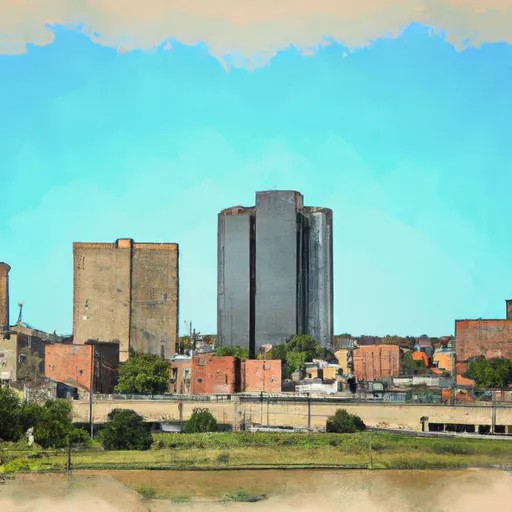-
 Snoflo Premium
Snoflo Premium
Get unlimited access to all our content
With no Ad interruptions! - Start Your Free Trial Login with existing account
Strong-City
Eden Index
Climate
8.3
•
Recreation
4.7
•
Community
1.8
•
Safeguard
5.4/10

Strong City is a small town located in Chase County, Kansas. The climate in Strong City is classified as humid continental, characterized by hot summers and cold winters. The average annual temperature is around 57°F, with temperatures reaching the mid-90s in summer and dropping below freezing during winter. Precipitation is evenly distributed throughout the year, with an average annual rainfall of 34 inches.
Hydrologically, Strong City is situated near the headwaters of Cottonwood River, which flows through the area. The river contributes to the region's hydrology and provides opportunities for various water activities such as fishing, boating, and canoeing.
Outdoor recreation opportunities abound in Strong City and its surrounding areas. The town is located near the Tallgrass Prairie National Preserve, offering visitors a chance to explore and learn about one of the last remaining tallgrass prairies in the world. Hiking, bird-watching, and wildlife viewing are popular activities in the preserve. The region also offers hunting opportunities for deer, turkey, and other game species, attracting outdoor enthusiasts from across the state. With its diverse outdoor offerings and natural beauty, Strong City is a haven for nature lovers and adventure seekers.
What is the Eden Index?
The Snoflo Eden Index serves as a comprehensive rating system for regions, evaluating their desirability through a holistic assessment of climate health, outdoor recreation opportunities, and natural disaster risk, acknowledging the profound impact of these factors on livability and well-being.
Climate Health Indicator (CHI): 8.3
Strong-City receives approximately
910mm of rain per year,
with humidity levels near 82%
and air temperatures averaging around
13°C.
Strong-City has a plant hardyness factor of
6, meaning
plants and agriculture in this region thrive during a short period during spring and early summer. Most
plants will die off during the colder winter months.
By considering the ideal temperature range, reliable water supplies, clean air, and stable seasonal rain or snowpacks, the Climate Health Indicator (CHI) underscores the significance of a healthy climate as the foundation for quality living.
A healthy climate is paramount for ensuring a high quality of life and livability in a region, fostering both physical well-being and environmental harmony. This can be characterized by ideal temperatures, reliable access to water supplies, clean air, and consistent seasonal rain or snowpacks.
Weather Forecast
Streamflow Conditions
Neosho
Area Rivers
Neosho
Snowpack Depths
Neosho
Reservoir Storage Capacity
Neosho
Groundwater Levels
Recreational Opportunity Index (ROI): 4.7
The Recreational Opportunity Index (ROI) recognizes the value of outdoor recreational options, such as parks, hiking trails, camping sites, and fishing spots, while acknowledging that climate plays a pivotal role in ensuring the comfort and consistency of these experiences.
Access to outdoor recreational opportunities, encompassing activities such as parks, hiking, camping, and fishing, is crucial for overall well-being, and the climate plays a pivotal role in enabling and enhancing these experiences, ensuring that individuals can engage in nature-based activities comfortably and consistently.
Camping Areas
| Campground | Campsites | Reservations | Toilets | Showers | Elevation |
|---|---|---|---|---|---|
| Big Indian NRD Rec Area | 50 | 1,334 ft | |||
| Marysville City Park | None | 1,144 ft | |||
| Tuttle Creek Cove - Tuttle Creek Lake | 55 | 1,183 ft | |||
| Bluestem Lake | None | 915 ft | |||
| Blue Rapids/Riverside City Park | None | 1,121 ft | |||
| Tuttle Creek State Park | 700 | 1,027 ft | |||
| Stockdale - Tuttle Creek Reservoir | None | 1,157 ft | |||
| Oregon Trail RV Park | 16 | 1,182 ft | |||
| Feits Memorial Park | 15 | 1,228 ft | |||
| Moline City Park | None | 1,040 ft |
Catastrophe Safeguard Index (CSI):
The Catastrophe Safeguard Index (CSI) recognizes that natural disaster risk, encompassing floods, fires, hurricanes, and tornadoes, can drastically affect safety and the overall appeal of an area.
The level of natural disaster risk in a region significantly affects safety and the overall livability, with climate change amplifying these risks by potentially increasing the frequency and intensity of events like floods, fires, hurricanes, and tornadoes, thereby posing substantial challenges to community resilience and well-being.
Community Resilience Indicator (CRI): 1.8
The Community Resilience Indicator (CRI) recognizes that education, healthcare, and socioeconomics are crucial to the well-being of a region. The CRI acknowledges the profound impact of these elements on residents' overall quality of life. By evaluating educational resources, healthcare accessibility, and economic inclusivity, the index captures the essential aspects that contribute to a thriving community, fostering resident satisfaction, equity, and social cohesion.

